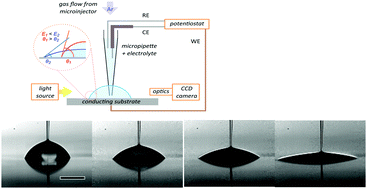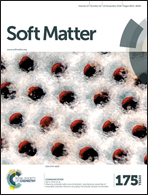Ultra-low voltage electrowetting using graphite surfaces†
Abstract
The control of wetting behaviour underpins a variety of important applications from lubrication to microdroplet manipulation. Electrowetting is a powerful method to achieve external wetting control, by exploiting the potential-dependence of the liquid contact angle with respect to a solid substrate. Addition of a dielectric film to the surface of the substrate, which insulates the electrode from the liquid thereby suppressing electrolysis, has led to technological advances such as variable focal-length liquid lenses, electronic paper and the actuation of droplets in lab-on-a-chip devices. The presence of the dielectric, however, necessitates the use of large bias voltages (frequently in the 10–100 V range). Here we describe a simple, dielectric-free approach to electrowetting using the basal plane of graphite as the conducting substrate: unprecedented changes in contact angle for ultra-low voltages are seen below the electrolysis threshold (50° with 1 V for a droplet in air, and 100° with 1.5 V for a droplet immersed in hexadecane), which are shown to be reproducible, stable over 100 s of cycles and free of hysteresis. Our results dispel conventional wisdom that reversible, hysteresis-free electrowetting can only be achieved on solid substrates with the use of a dielectric. This work paves the way for the development of a new generation of efficient electrowetting devices using advanced materials such as graphene and monolayer MoS2.



 Please wait while we load your content...
Please wait while we load your content...